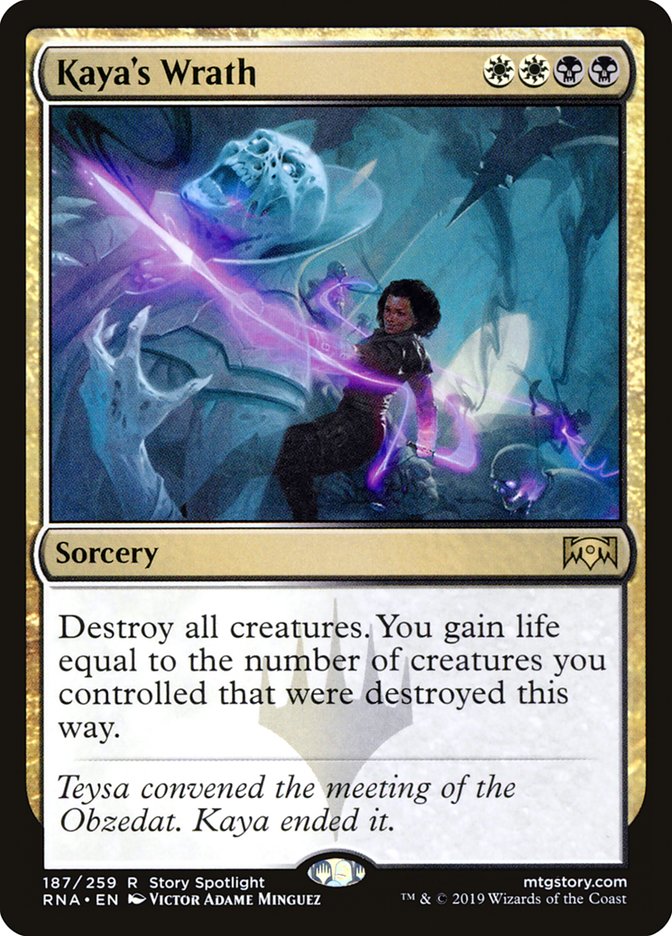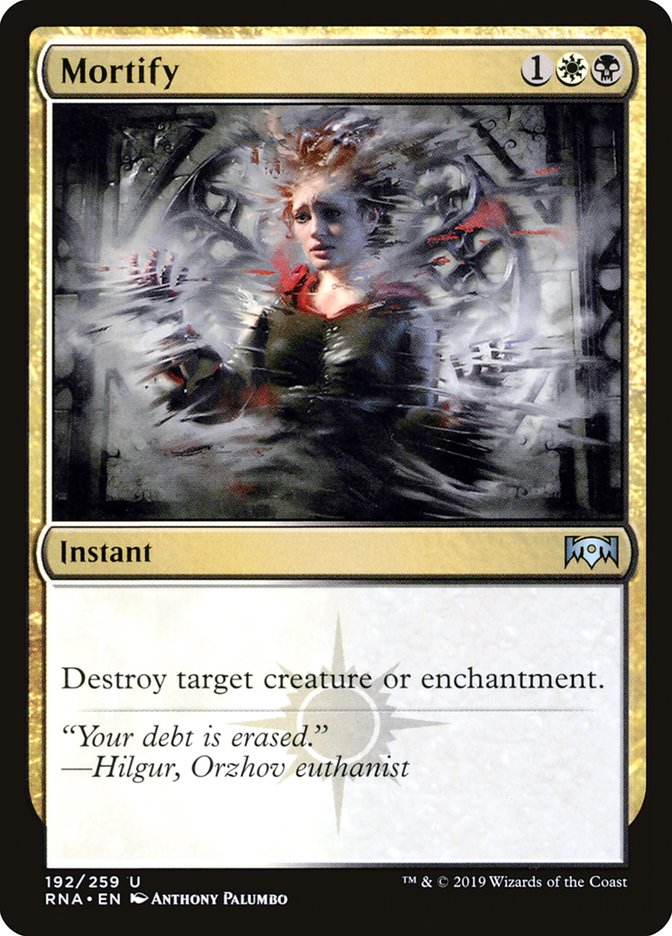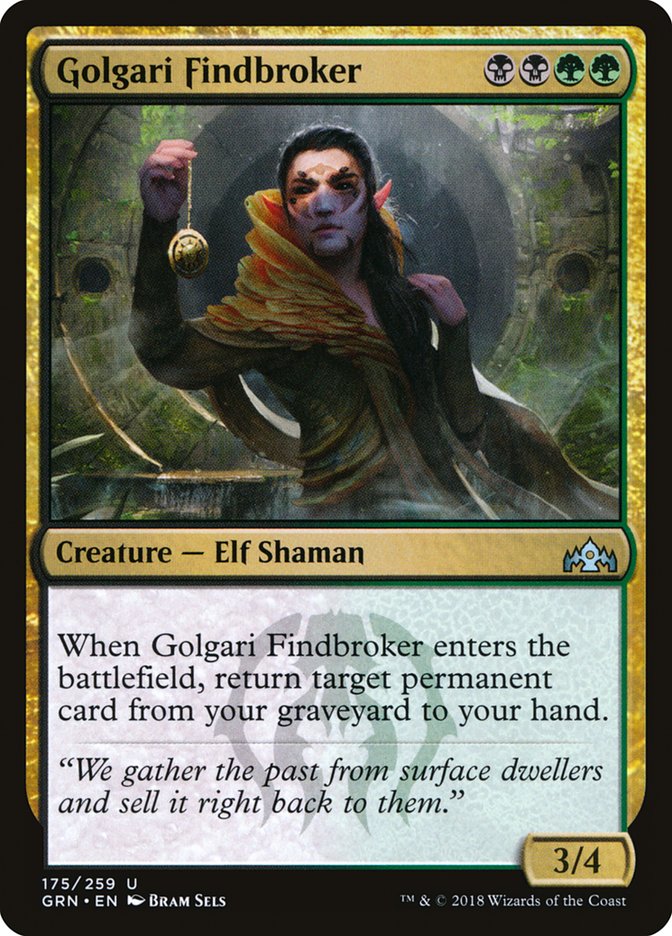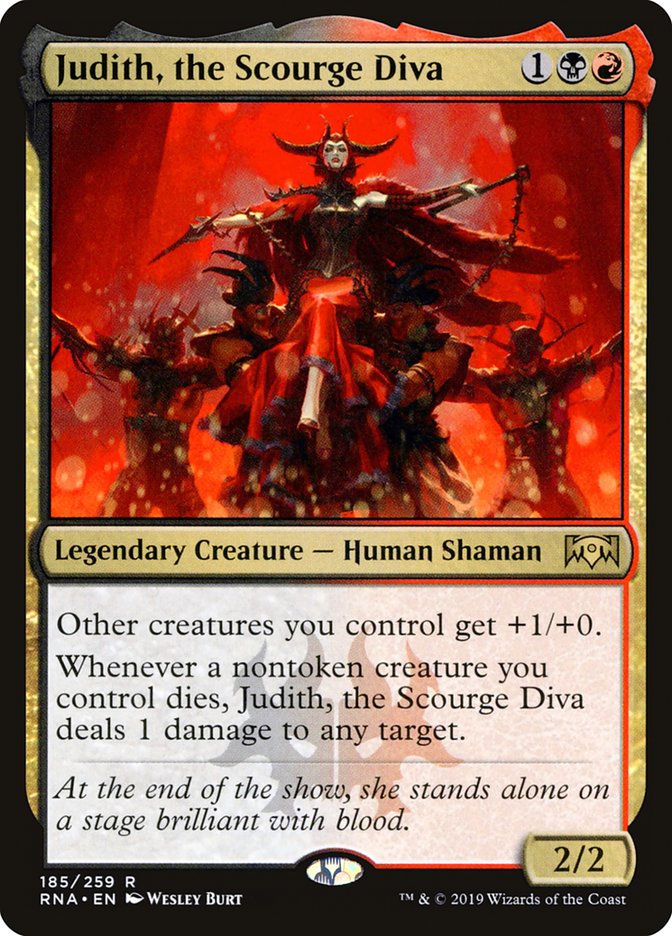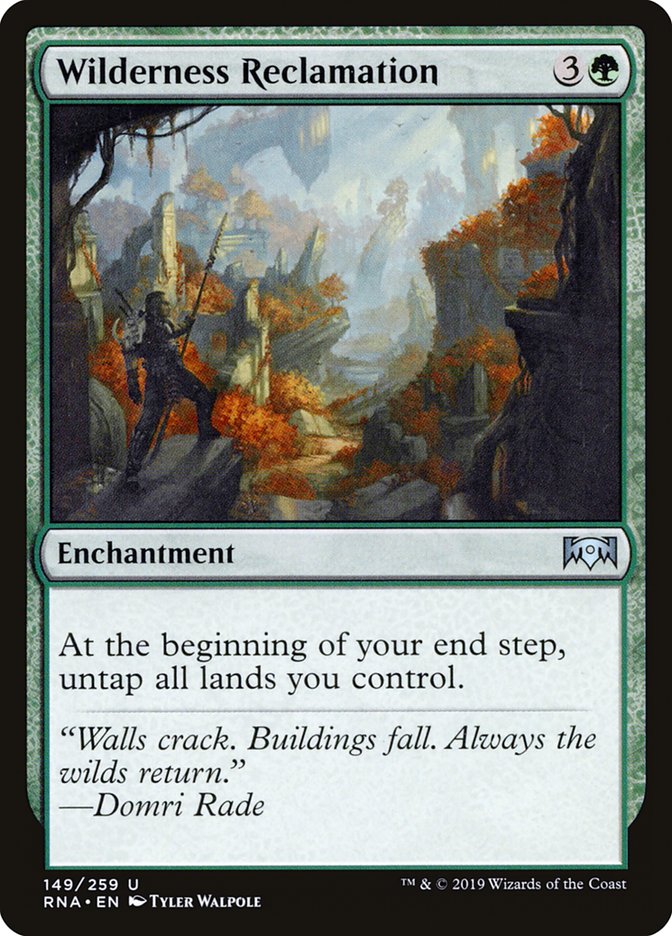Welcome to another edition of
Fact or Fiction!
Today, Ross Merriam, Andrew Elenbogen, and Shaheen Soorani are here
to render their verdicts on five statements about SCG Indianapolis.
Don’t forget to vote for the winner at the end!
1. Mono-Red Aggro is the aggro deck to beat coming into SCG
Indianapolis.
Ross Merriam:
Fact.
I’ve never seen a red deck with so much card advantage in my entire life.
Light Up the Stage has proven to be a great addition, especially in
conjunction with Runaway Steam-Kin to quickly deploy the extra cards, and
Experimental Frenzy is still a great card that takes over games by itself.
Normally you can expect red decks to peter out in the mid-game, but this
one keeps chugging which makes it tough to turn the corner, leaving them
time to draw more burn spells to close the game out.
And speaking of those burn spells, there’s so much reach in the deck that
trying to use your life total as a resource so as to prepare for the deck’s
card advantage is a dangerous game to play. I don’t feel safe until I’m at
at least seven, if not ten so as to survive two to three burn spells, which
is not only going to force players to trade early and often, but also
punish any untuned manabases in the room.
As the format evolves, we may see red decline like it did last season, but
these decks are no joke and are going to be better tuned than most, so
respect them.
Andrew Elenbogen:
Fiction.
In the previous Standard format, I would describe Mono-Red Aggro as a
solidly tier 2 deck. As soon as people started bringing large amounts of
Wildgrowth Walkers to the battlefield, the deck got bad quickly. It also
was somewhat underpowered compared to the format at large, and could be
accurately described as 4 Goblin Chainwirler, 4 Experimental Frenzy, and 52
napkins.
Light Up the Stage is an amazing card and helps the deck pretty much across
the board. But Skewer the Critics is only marginally better than Wizard’s
Lightning, and Wildgrowth Walker is still in the maindeck of most green
midrange decks. To make matters worse, control picked up a powerful new
tool in Absorb, and most Bant Nexus decks incidentally have three or four
copies of Knight of Autumn in their sideboards. That’s not to mention the
fact that most decks gained at least as much as Mono-Red from Ravnica Allegiance.
On the whole, I think Mono-Red Aggro is a playable deck, but not an
exciting one. I’m not very confident, but I think the best aggro deck is a
white aggro variant. That said, Max McVety will probably Top 8 SCG
Indianapolis with Mono-Red anyway.
Shaheen Soorani: Fact.
I do believe that there will be equally strong Rakdos variants of the
tried and true sideways deck, but Mono-Red Aggro will have a higher
attendance rate. The deck is cheap to build, and somehow even easier to
play than it was before. The amount of three-damage burn spells that are in
Standard now makes my stomach turn, especially when I look back at the kind
of garbage tossed as a bone to blue fans over the years. Squelch. Give me a
break.
For these reasons, Absorb should be a powerful replacement to Sinister
Sabotage, Cry of the Carnarium boosts in power level, and control/midrange
decks should continue to punish aggro opponents with cards like Wildgrowth
Walker and Lyra Dawnbringer. Although Mono-Red Aggro has all the tools for
success, competitors will adjust in expectation for the big aggro turnout.
2. Esper Control is the control deck to beat coming into SCG
Indianapolis.
Ross Merriam:
Fact.
The power of Niv-Mizzet, Parun led me to believe that Jeskai would continue
to be the control deck of choice, especially given Esper’s lackluster
replacement of Chromium, the Mutable, but black compensates nicely in other
areas.
The first is with Mortify, a removal spell that’s quite valuable with all
the enchantments around. From Experimental Frenzy to Wilderness Reclamation
to Conclave Tribunal there’s no shortage of non-creature targets, and
having removal that pulls double-duty in non-creature matchups is huge for
control decks, which tend to suffer from weak game 1s against those decks
due to the number of dead cards they have.
Second is Kaya’s Wrath, which gives Esper an excellent answer to decks that
go bigger than Deafening Clarion and a convenient answer to Carnage Tyrant.
I think we all know how powerful Wrath of God is, but it’s easy to forget
now that the card isn’t in Standard very often. In an unknown field, having
the more powerful spell is important.
Control decks almost always win or lose based on their reactive elements,
so these upgrades are more valuable than the loss of Niv-Mizzet, Parun, and
you should be adjusting your threat bases accordingly.
Andrew Elenbogen:
Fact.
For most of preview season, my prediction was that people would move to
Esper following the release of Ravnica Allegiance. I predicted
that this move would be incorrect, but people would do it anyway because
they like shiny new cards. But everything changed when two cards were
previewed:
Wizards of the Coast stopped making four-mana unconditional sweepers for
very good reasons: they’re extremely oppressive and make entire strategies
unplayable. Even at such a restrictive cost, Kaya’s Wrath is amazing.
Mortify is not nearly as powerful as Kaya’s Wrath, but it’s incredibly
well-positioned. Enchantments are quite popular in Standard right now, with
Experimental Frenzy and Conclave Tribunal in the aggro decks, and
Wilderness Reclamation and Search for Azcanta in Bant Nexus. That last
point means that the Esper deck will have far less dead cards game 1 than
Jeskai. In a longer game, that can make all the difference.
Shaheen Soorani: Fact.
I feel like this question is a bit of a setup, but I’ll bite! I’ve
written a few words about Esper Control in Ravnica Allegiance
Standard. Although I may be slightly biased, Esper Control has the manabase
to finally take over as the control deck of Standard. Outside of Kaya’s
Wrath, control decks didn’t gain much from the new set. Ultimately, Ravnica Allegiance was a letdown for control supporters of the
Azorius Senate and the Orzhov Syndicate. Even with the lack of additional
spells, there were already ample answers from Guilds of Ravnica,
and our sneaky Dimir friends, to get the Esper Control machine firing on
all cylinders.
If we’re considering Wilderness Reclamation combo decks, then I’m confident
that Esper Control will dominate the archetype. Vraska’s Contempt has been
revitalized, Thought Erasure is so much better than Transgress the Mind
(which was awesome), Absorb is…okay, and four-mana battlefield sweepers are
back in business. As long as we have Teferi, Hero of Dominaria as the
complete win condition package, I like our chances.
3. The lack of conversation around Golgari Midrange shows that
midrange isn’t a viable option coming into SCG Indianapolis.
Ross Merriam:
Fiction.
The reason you haven’t heard about Golgari Midrange is two-fold. The first
is that it’s old hat and even if it’s still good, the majority of the hype
is going to be around what new cards are set to emerge and which ones will
fall flat. So in this instance a lack of hype should not be mistaken for a
lack of viability.
Second, is that with all ten guilds available, the possibilities for
midrange decks have expanded. You can play almost any two- or three-color
combination and have a number of powerful options to choose from.
Green-based midrange decks can go full ramp with Llanowar Elves and
Incubation Druid, ramping into giant Gruul monsters, token-themes cards
from Selesnya, or the flying Sphinx’s Revelation itself in Hydroid Krasis.
Black-based midrange lists have lots of removal options if they move into
other colors, like Mortify and Bedevil, and there’s a Big Red deck floating
around that finally puts Goblin Chainwhirler next to Status for the
build-your-own Plague Wind.
This wide swath of options prevents any single deck from getting a lot of
hype, but one or more of these decks is going to be a player. We just won’t
know which until Sunday.
Andrew Elenbogen:
Fiction.
While I expect most midrange decks this weekend to be three-color rather
than straight Golgari, I think green midrange is one of, if not, the best
deck. In my testing, Growth-Chamber Guardian has proved to be a powerful
card in a variety of shells and Hydroid Krasis is an excellent
curve-topper. Both creatures provide a lot of value against controlling
decks and make counterspells awkward in various ways. In addition,
splashing blue for Hydroid Krasis gives access to counterspells which are
invaluable against Bant Nexus.
In fact, when I was testing Bant Nexus, I lost most frequently to Temur
Midrange. The combination of Gruul Spellbreaker, countermagic and
Cindervines was simply too much to overcome.
While I won’t personally be playing midrange this weekend for range
reasons, I know a lot of strong players who will be, and I think they will
perform very well.
Shaheen Soorani: Fiction.
Golgari is an absolutely viable option, but it will have to adapt like it
has so well in the past. Instead of jamming a ton of Carnage Tyrants and
value midgame planeswalkers, Golgari Midrange must adjust to the fresh
aggro wave that is about to crash on Standard. This means additional cheap
removal, four copies of Wildgrowth Walker, and a heavy sideboard plan
against Wilderness Reclamation decks.
I haven’t seen much of it floating around in testing, which adds to the
narrative that it dropped in favor. The truth is, Ravnica Allegiance didn’t add anything to Golgari Midrange, which
makes it a boring deck to load up for online play. I personally haven’t
tried Jeskai Control for similar reasons and think that Niv-Mizzet, Parun
is still a busted card. Don’t count out decks because they aren’t as spicy
as the newcomers!
4. A deck with Judith, the Scourge Diva will win SCG Columbus.
Ross Merriam:
Fiction.
Judith, the Scourge Diva is one of the most hyped cards in Ravnica Allegiance, and for good reason. It’s incredibly powerful
and synergizes with other powerful cards in the format, which is typically
a recipe for success. I’ve been impressed by the card when I’ve seen it in
action, but unfortunately I haven’t been impressed by any of the decks
surrounding it.
Most of the decks I see with Judith are three-color aggro decks that are
taking advantage of sacrifice synergies, and their aggro plans suffer from
the three-color manabase causing consistency issues, which gives opposing
players time to line up their answers appropriately to break up the
synergies. The removal in Standard right now is quite good, so
heavy-synergy decks are hard to execute.
I’d be more apt to put Judith in a Rakdos Aggro shell and utilize her as a
pseudo-lord with added reach, but I don’t see that deck being significantly
more powerful than Mono-Red Aggro, which puts Judith in the unenviable
position of being a good card without a good home. It’s a fate that has
befallen many a powerful Magic card, but in this game context is
everything.
That said, given some more time and a more defined metagame there could
definitely be a powerful deck based around Judith in some way, but I’d be
very surprised to see it in week one of the format.
Andrew Elenbogen:
Fiction.
Judith, the Scourge Diva decks will not dominate for one reason this
weekend: Bant Nexus. Much of the damage Judith decks deal is through combat
and their clock is usually not fast enough to race the Nexus deck in the
presence of even a single Root Snare. Their disruption options are
nonexistent game one and limited to a couple of Duress and a prayer in
subsequent games.
I have also found Judith decks to have issues with Hydroid Krasis. While
they can often remove the body, the lifegain negates a lot of their
incidental damage and the cards make it challenging to compete with grindy
green decks in the lategame.
I don’t think there’s anything wrong with Judith decks on power level but I
think they’re poorly positioned this weekend.
Shaheen Soorani: Big Fiction.
This analysis might age poorly, but Judith, the Scourge Diva is not where
you want to be this first weekend. With many players itching to try
Wilderness Reclamation decks, that poses a very poor metagame for a
heavy-creature aggro deck. Battlefield sweepers, fog effects, lifegain, and
a deadly midgame battlefield setup makes a deck full of creatures less
effective than good old-fashioned burn.
Judith, the Scourge Diva is a decent Magic card that may gain some momentum
after this weekend. From a control perspective, it’s the easier aggro deck
to defeat. The matchup it has against traditional Mono-Red Aggro is
probably fantastic; however, the first weekend of a vibrant, new Standard
calls for ultimate preparedness. It’s a cool card that may end up in a new
Mardu, Jund, or straight up Rakdos shell, but it will not win this
tournament.
5. A deck with Wilderness Reclamation will win SCG
Indianapolis
Ross Merriam:
Fiction, but it’s close.
The Wilderness Reclamation decks, whether they’re utilizing Nexus of Fate
and Teferi or going hard towards Expansion, are the most powerful decks in
the format. When they’re humming, they’re on a completely different level.
And on week one, when everyone is still learning, that edge in power level
is a huge advantage.
The problem I see is that the card has had a target on its back from the
day it was previewed. No one is getting caught by surprise, and everyone
will have some answers. They may not be the best answers, but it’s hard to
go wrong with some mix of Negate, Duress, and Disenchants in your
sideboard. There’s going to be no grace period for the Todd Andersons of
the world that are looking to make the powerful enchantment work, and that
means the bar is higher for them in terms of how tuned their lists need to
be.
If Todd or someone else finds that list and comes with a strong knowledge
of their matchups, they could take it down and I wouldn’t be surprised, but
if you’re asking me, I’ll take the field.
Andrew Elenbogen:
Fact.
I don’t expect any deck to be a large enough share of the field to be
over 50% to win Indianapolis. That said, I think Bant Nexus is
substantially more likely than any other deck to succeed this weekend, so
I’ll take it. The deck has some real issues when it doesn’t control
Wilderness Reclamation and with various sideboard cards, but it’s best
draws are almost unbeatable and its game 1 win percentage is very high.
The reason I’m not playing Bant Nexus this weekend is that I was unable to
find a way to beat the large numbers of counterspells and other disruption
that’s brought to bear against the deck after sideboard. But I don’t think
that problem is unsolvable. Whoever solves that problem will put themselves
in a great position to win the tournament and just might have a broken deck
on (and in) their hands.
Shaheen Soorani: Fiction.
I’m positive that there will be a few Wilderness Reclamation decks. that
make the Top 8 of SCG Indianapolis, but I don’t think it’ll win. Week one
often has a deck that’s slightly off the radar emerge victorious due to the
rest of the field being taken by surprise. This means there will be a
well-crafted aggro deck, a midrange deck that can take on both Mono-Red
Aggro and control easily, or a deck that has received very little coverage
thus far that hoists the trophy.
When the online metagame and strategy articles are cluttered with Bant
Nexus strategies, I don’t like its chances for exactly first place. I’ll
also join my colleagues from previous articles, confident that the optimal
Wilderness Reclamation deck is not here yet. There will be a ton of
different takes on it at SCG Indianapolis, but not the one that has been
perfected to handle a metagame this wide.




